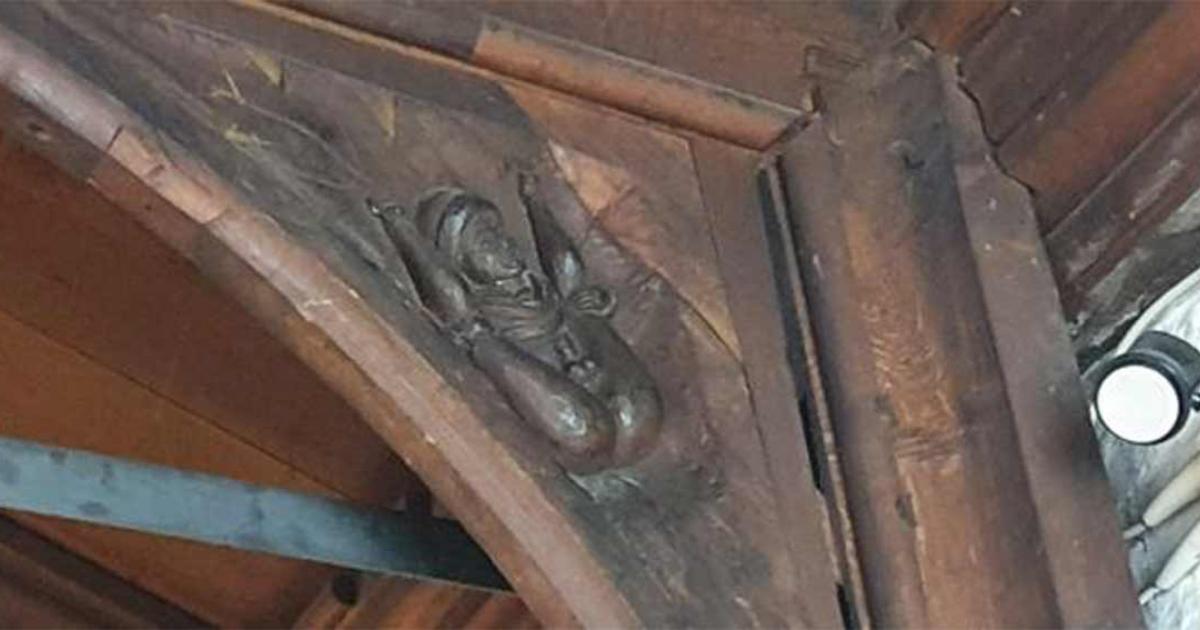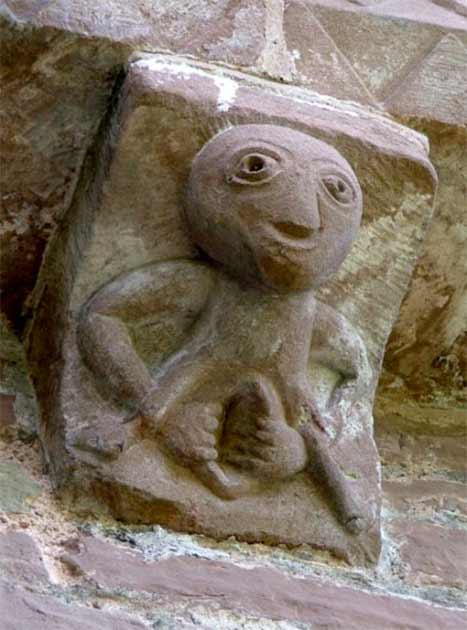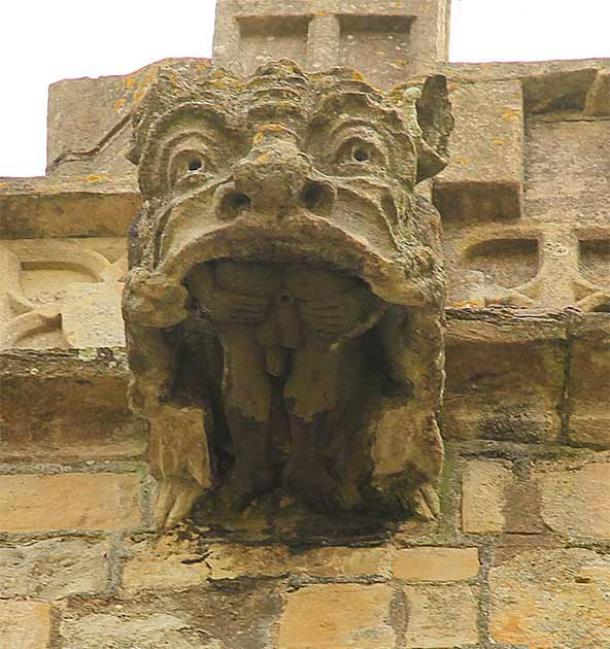In the heart of Hereford, England, the majestic All Saints Church, a Grade II listed gem on the UK’s National Heritage List, has stood as a beacon of faith since the early 10th century. Recorded in William the Conqueror’s 1086 Domesday Book, this grand structure is the largest church in Hereford, steeped in history and reverence. Yet, beneath its sacred arches, a scandalous secret has recently thrust it into the global spotlight: a medieval carving of a man brazenly exposing his testicles, now a viral sensation.

This cheeky discovery, dubbed Seamus “O’Toole” by locals, was first unveiled to the public in the late 1990s when food writer and restaurateur Bill Sewell opened a cafe within the church. A new seating gallery above the cafe’s kitchen offered diners an unexpected view of the explicit carving—a man, legs hoisted high, proudly displaying his genitalia. What was once a hidden quirk of medieval craftsmanship has now exploded across social media platforms like Reddit, Twitter, and Facebook, with thousands sharing the image. The controversy even prompted Snopes, the renowned fact-checking site, to verify its authenticity in today’s hyper-sensitive online climate.
Theories abound about the carving’s origins. Some speculate it was the work of a disgruntled medieval artisan, perhaps slipping a rebellious jab into the church’s holy framework. Others draw parallels to “sheela na gigs,” a term for architectural figures exposing genitalia, commonly found in churches across Ireland, Great Britain, and parts of Europe. While sheela na gigs typically depict women with exaggerated vulvas—interpreted as symbols of fertility, protection against evil, or warnings against lust—this male example is a rare find. According to Sheelanagig.org, male genitalia carvings are exceptionally uncommon, making All Saints’ rogue figure a peculiar standout.

The carving’s fame isn’t new. In 1998, Father Andrew Mottram, an enterprising vicar, proposed capitalizing on its notoriety by selling postcards featuring the image. His idea, however, was swiftly shut down by the parochial church council, who deemed it too scandalous. Yet, the carving’s allure persists, drawing comparisons to other risqué ecclesiastical art. For instance, a 12th-century carving at St Michael the Archangel’s Church in Laxton, Nottinghamshire, depicts a man’s legs, buttocks, and genitals being devoured by a hellish monster—a grim blend of exhibitionism and divine retribution.
But All Saints’ tale takes a darker, more modern turn. In 2013, a shocking incident at Hutton All Saints Church in Essex saw a man burst into the sanctuary, wielding his own severed testicles. As reported by the Daily Mail and Brentwood Weekly News, the man, in a frenzy, disrupted wedding preparations, leaving blood and chaos in his wake. “There was blood everywhere,” an eyewitness recounted, describing the man’s berserk behavior as he tossed chairs and brandished his gruesome trophy. The incident, as bizarre as it was horrifying, cemented the church’s place in a strange lineage of genitalia-related scandals.

What do these carvings—and this shocking act—mean? Are they crude jests, pagan relics, or something else entirely? Sheela na gigs, often linked to fertility or warding off evil, remain shrouded in mystery, their true purpose lost to time. The All Saints carving, with its bold male figure, adds another layer to this enigma. For now, it continues to captivate and provoke, a rude secret hidden in plain sight within a holy place. As we marvel at its audacity, one thing is clear: the sacred and the scandalous have a curious way of coexisting in England’s ancient churches.




